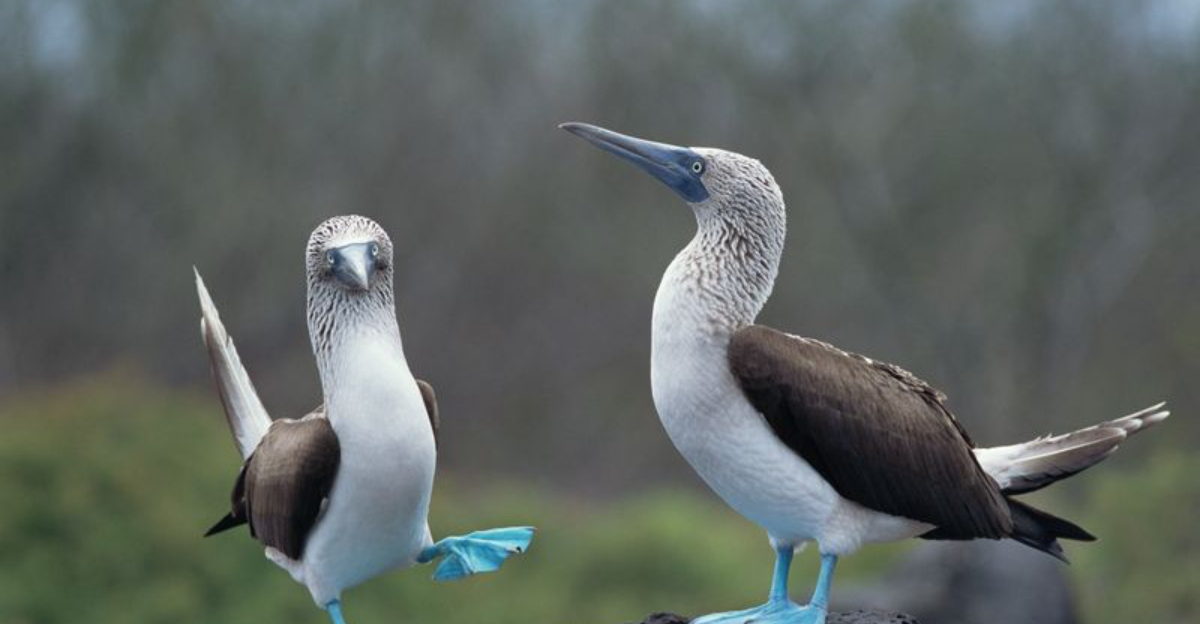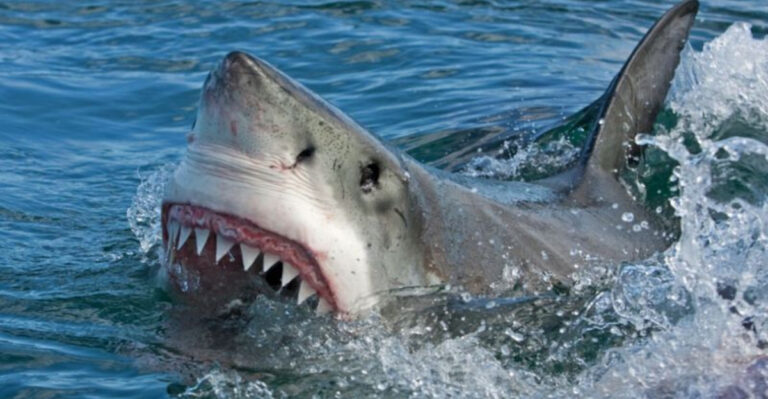14 Facts About The Wood Duck (Possibly The Most Beautiful Bird In The World)
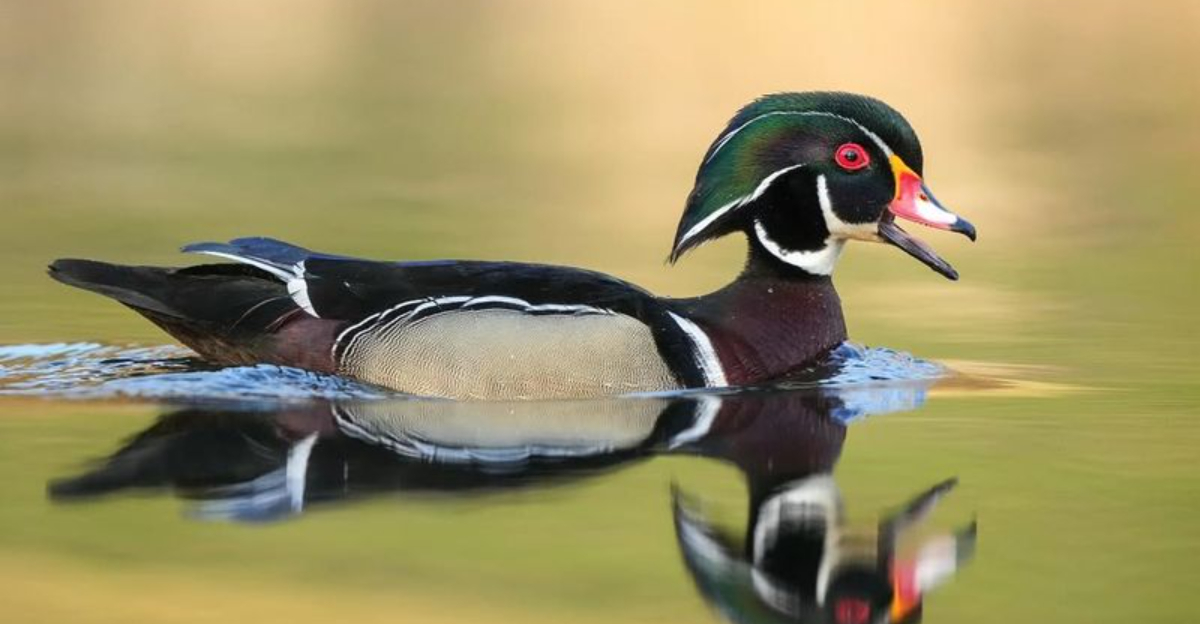
Imagine spotting a rainbow with wings gliding across a forest pond – that’s the wood duck for you! These dazzling birds look like they’ve been painted by an artist with the most vibrant colors in nature’s palette.
Native to North America, wood ducks stand out with their spectacular plumage and unique nesting habits that set them apart from their waterfowl cousins.
1. Rainbow Warriors
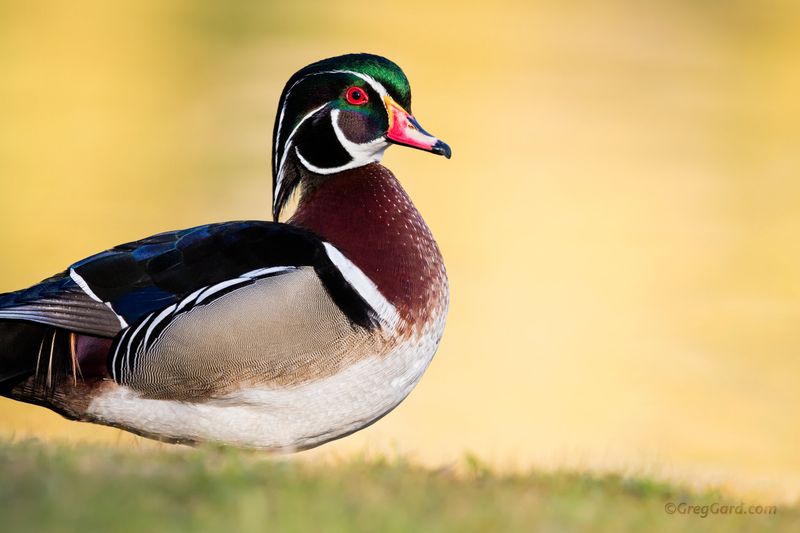
Males sport an iridescent green head crested with purple and white stripes running down their necks. Their burgundy chest, golden sides, and cream-colored bellies create a walking color explosion.
Even their eyes are striking – bright red surrounded by white eyeliner! No wonder they’re nicknamed ‘Swamp Peacocks’ by some bird enthusiasts.
2. Tree-Dwelling Swimmers

Unlike most ducks that nest on the ground, wood ducks prefer high-rise living! They make their homes in tree cavities up to 65 feet above ground, typically near water.
These cavity nesters happily accept human-made nest boxes too, which has helped their populations recover after near-extinction in the early 1900s.
3. Baby’s First Leap Of Faith
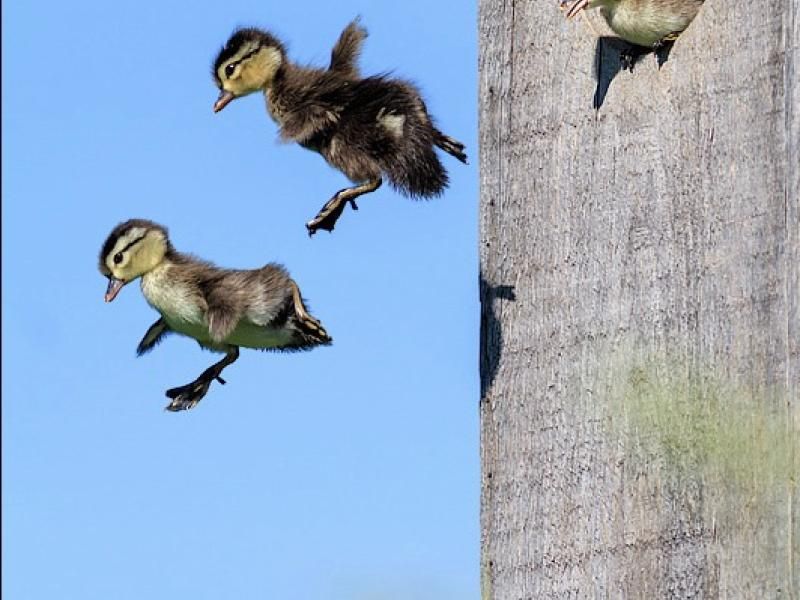
Talk about an extreme childhood! Just one day after hatching, wood duck babies jump from their tree nest – sometimes falling 50+ feet without injury.
Mom calls from below, encouraging the fluffy daredevils to take the plunge. Their lightweight bodies and downy feathers act like natural parachutes during this incredible leap of faith.
4. Clawed Climbers
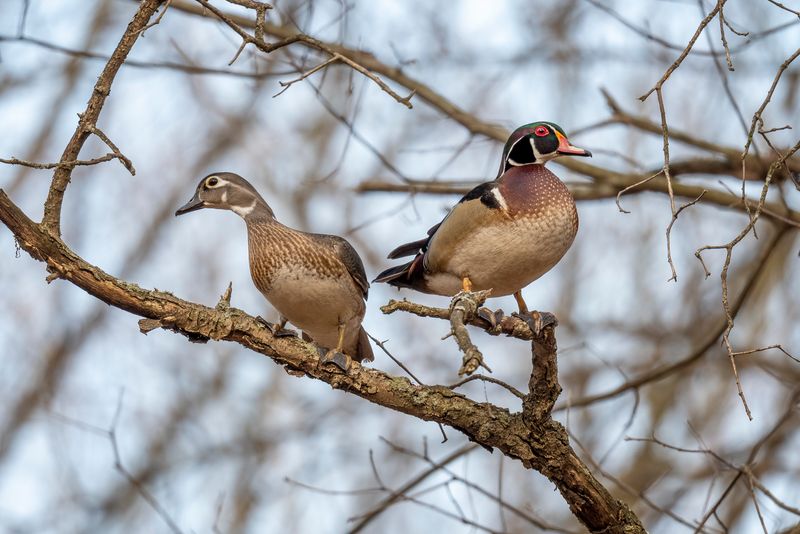
Sharp claws help these ducks grip tree bark like feathered rock climbers! Their specially adapted feet allow them to perch on branches – a rare skill in the duck world.
Young ducklings use tiny claws to climb up the inside of nest cavities before they can fly. These unique adaptations make wood ducks true masters of forest living.
5. Silent Types
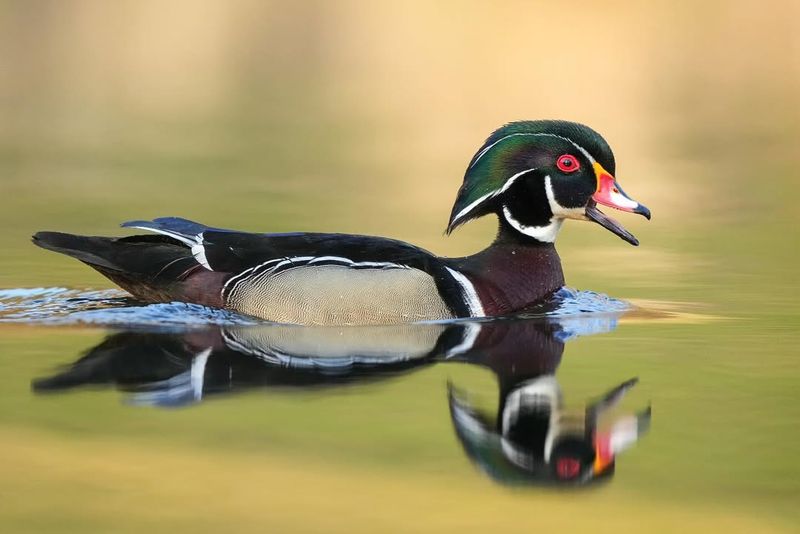
For such flashy dressers, wood ducks keep surprisingly quiet. Females make a squealing “oo-eek, oo-eek” when alarmed – earning them the nickname “squealers” among hunters.
Males are nearly mute except during breeding season when they produce soft, thin whistles. Their understated calls contrast dramatically with their loud fashion sense!
6. Memory Champions
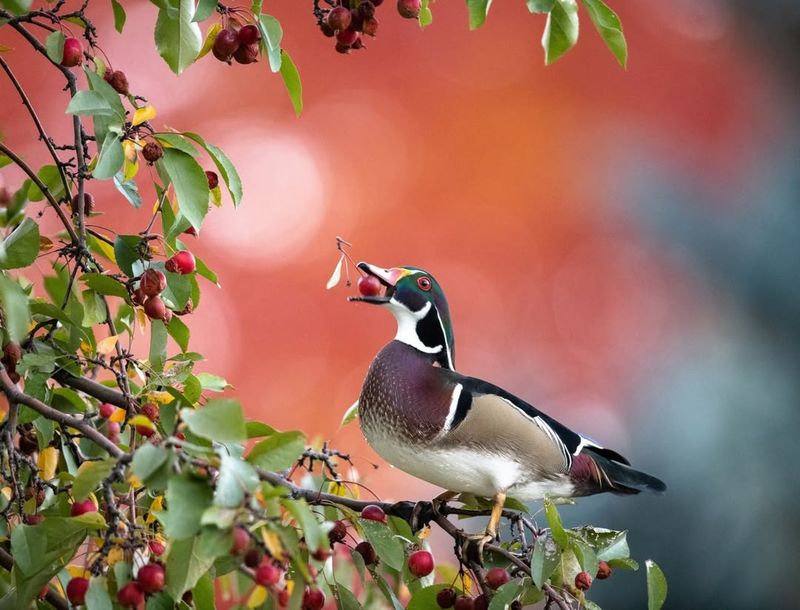
These brainy birds never forget a meal spot! Wood ducks memorize the locations of seasonal food sources across their territory, returning precisely when nuts and fruits ripen.
They’ll fly miles between feeding grounds, nesting sites, and roosting areas daily. This remarkable spatial memory helps them thrive in complex forest environments where food availability constantly changes.
7. Acorn Aficionados
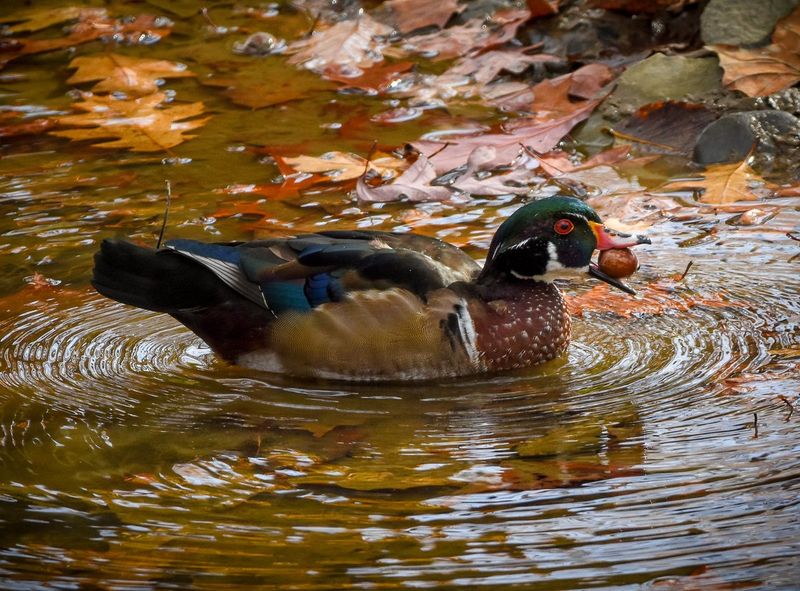
Forget bread crumbs – these ducks crave acorns! Wood ducks gobble up these tree nuts like candy, sometimes consuming over 50 in one feeding.
Their diet shifts seasonally from insects and aquatic plants in summer to nuts and seeds in fall. This adaptable appetite helps them store fat for winter and explains their scientific name Aix sponsa – “waterbird bride” – symbolizing their marriage to forest and water.
8. Egg-Cellent Mothers

Female wood ducks sometimes lay eggs in each other’s nests – a behavior called “dump nesting.” One lucky mama might end up incubating 40 eggs, though a typical clutch is 10-15!
Despite this daycare arrangement, they’re dedicated mothers. A hen will lead her brood to water within 24 hours of hatching and protect them fiercely for 5-6 weeks.
9. Fashion-Forward Feathers
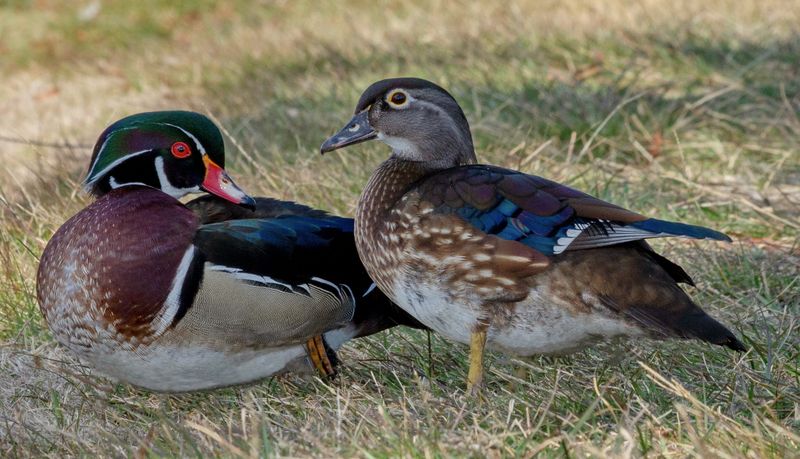
Male wood ducks transform from dazzling to drab each summer during their “eclipse plumage” phase. This temporary makeover helps them hide while molting their flight feathers.
For a few weeks, they resemble females – like celebrities donning disguises to avoid paparazzi! By fall, they’re back to their spectacular colors just in time for mating season.
10. Speed Demons
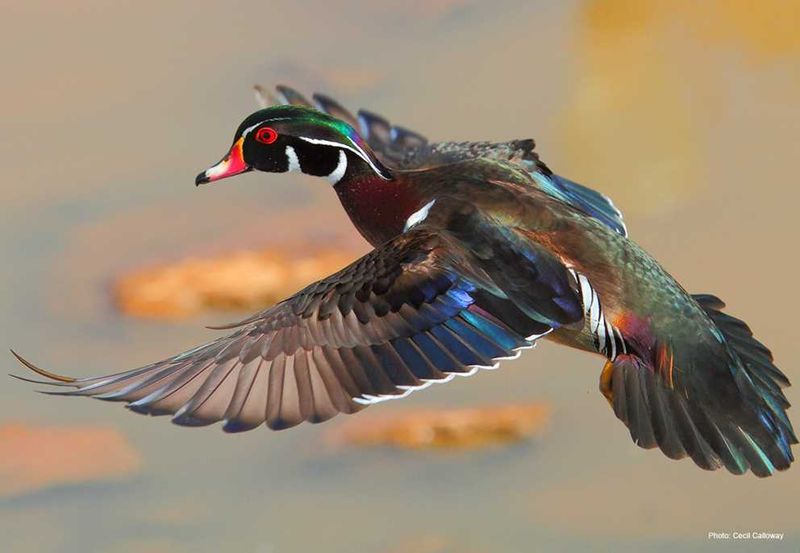
Zooming through forest canopies at 30 mph, wood ducks are aerial acrobats! Their narrow wings and streamlined bodies let them weave between trees with fighter-jet precision.
Taking off straight up from water without a running start, they rocket skyward in a heartbeat. This vertical launch ability helps them escape predators in the tight quarters of wooded swamps.
11. Comeback Kings
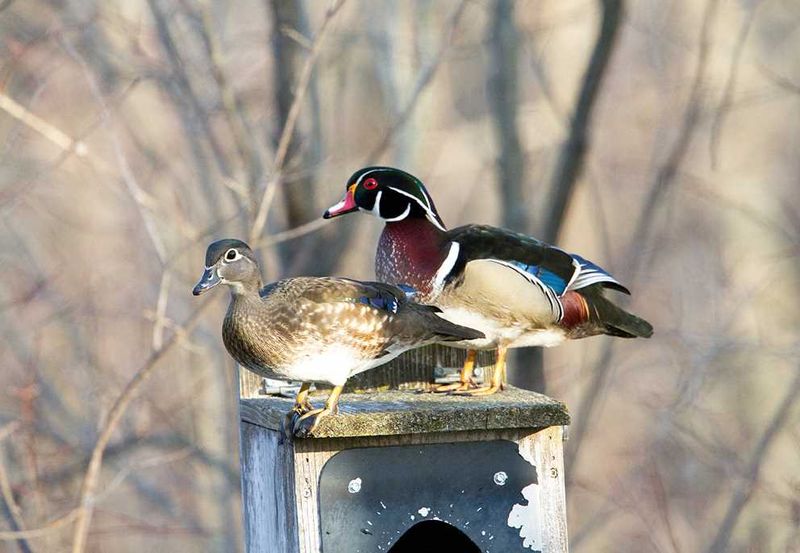
Nearly hunted to extinction for their meat and gorgeous feathers in the early 1900s, wood ducks staged an incredible recovery. Conservation efforts, including the Migratory Bird Treaty Act of 1918, saved these living jewels.
Widespread nest box programs gave them homes when old trees were scarce. Today they’re among North America’s most successful wildlife conservation stories!
12. Winter Wanderers
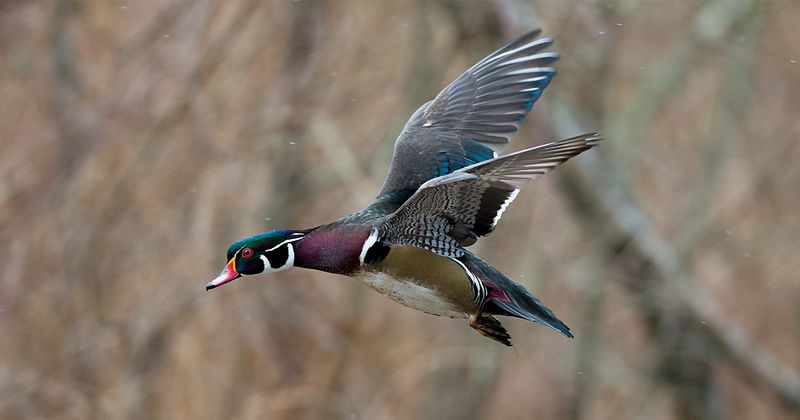
Northern wood ducks pack their bags each fall, migrating to southern states and Mexico where waters remain unfrozen. Their southern cousins often stay put year-round, enjoying a permanent staycation.
Interestingly, they migrate at night, using stars for navigation! This nocturnal travel helps them avoid daytime predators and take advantage of calmer night air.
13. Four-Season Residents
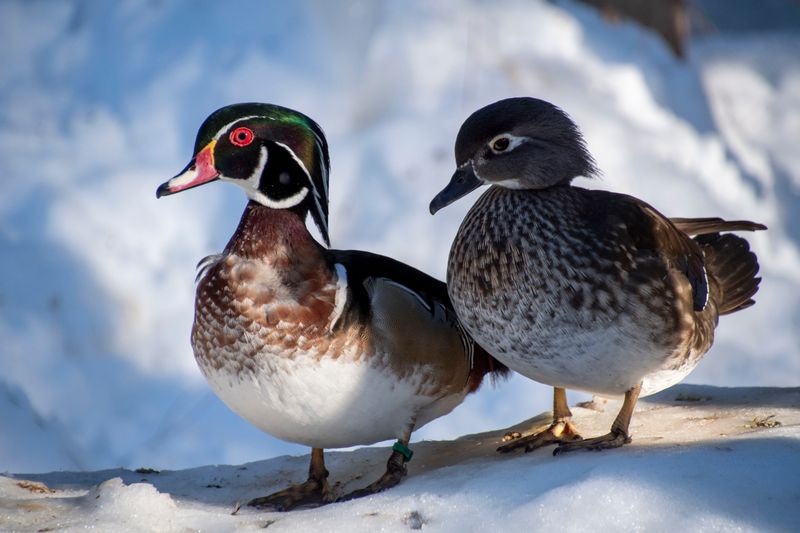
Hardy souls in the southern parts of their range, wood ducks brave all seasons without migrating. They’ve adapted to find food year-round, from spring insects to winter seeds.
During cold snaps, they conserve energy by reducing movement and huddling together. Their waterproof feathers and specialized circulation keep their feet from freezing even on ice!
14. Cultural Icons
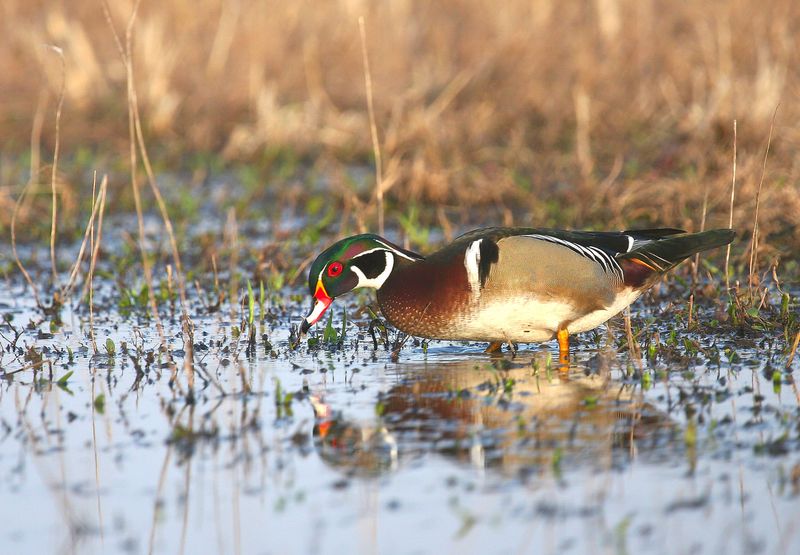
Wood ducks have strutted into human hearts and art for centuries! Native American tribes featured them in stories and ceremonial regalia, celebrating their beauty and forest wisdom.
Wildlife artists like John James Audubon showcased their splendor in famous paintings. Today, they appear on stamps, decoys, and as the official state waterfowl of Mississippi.




